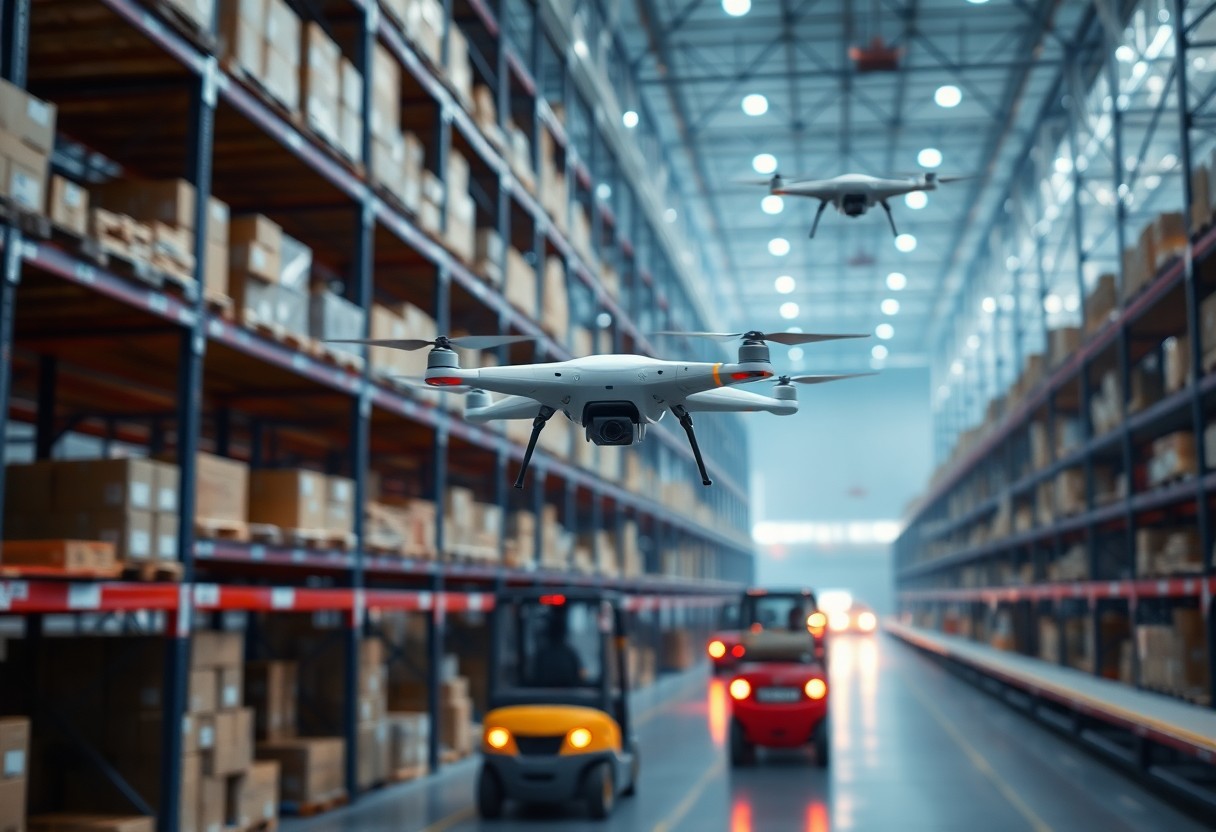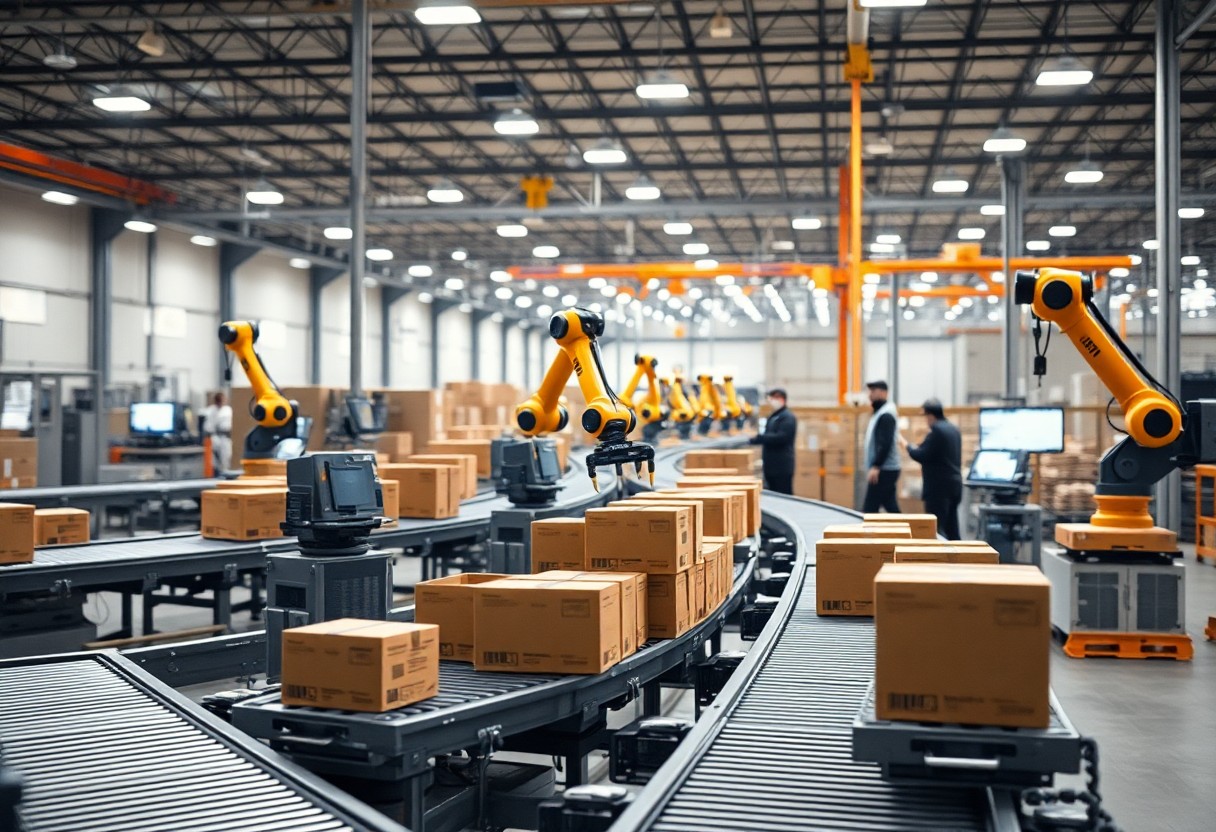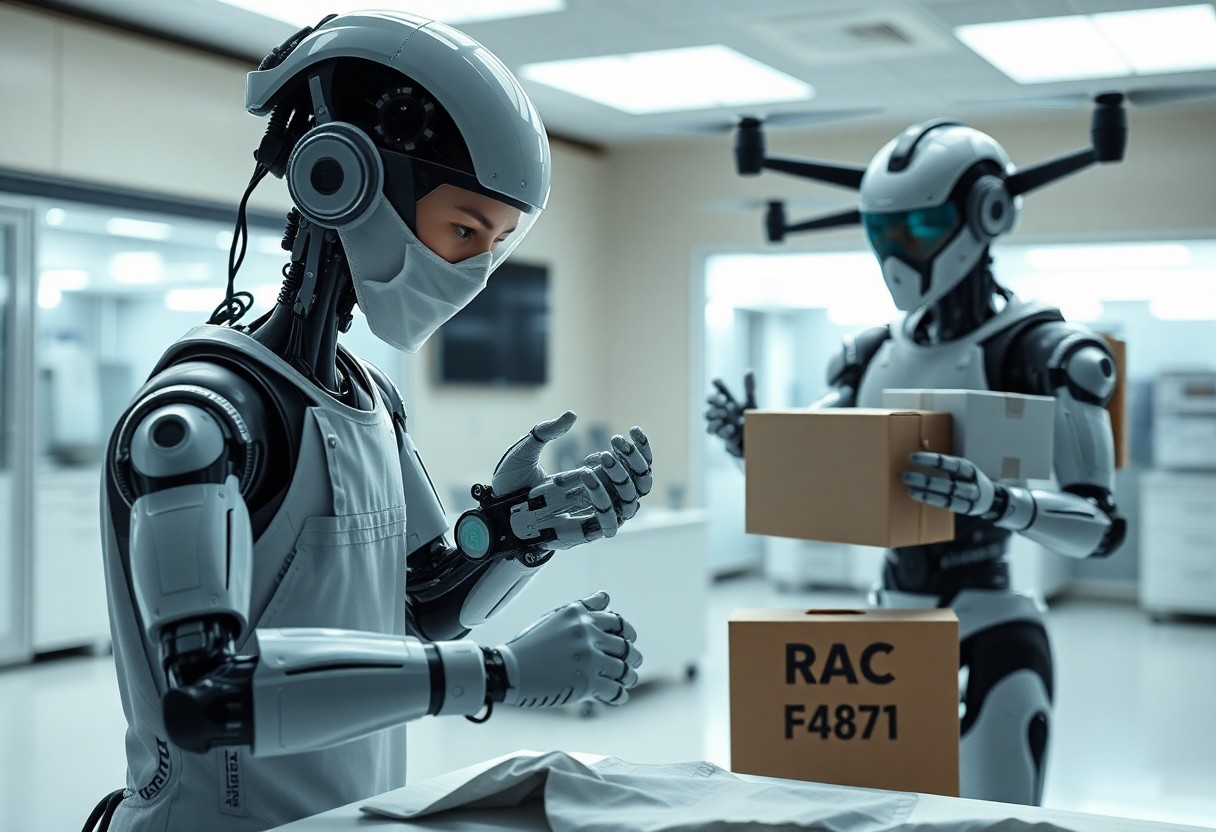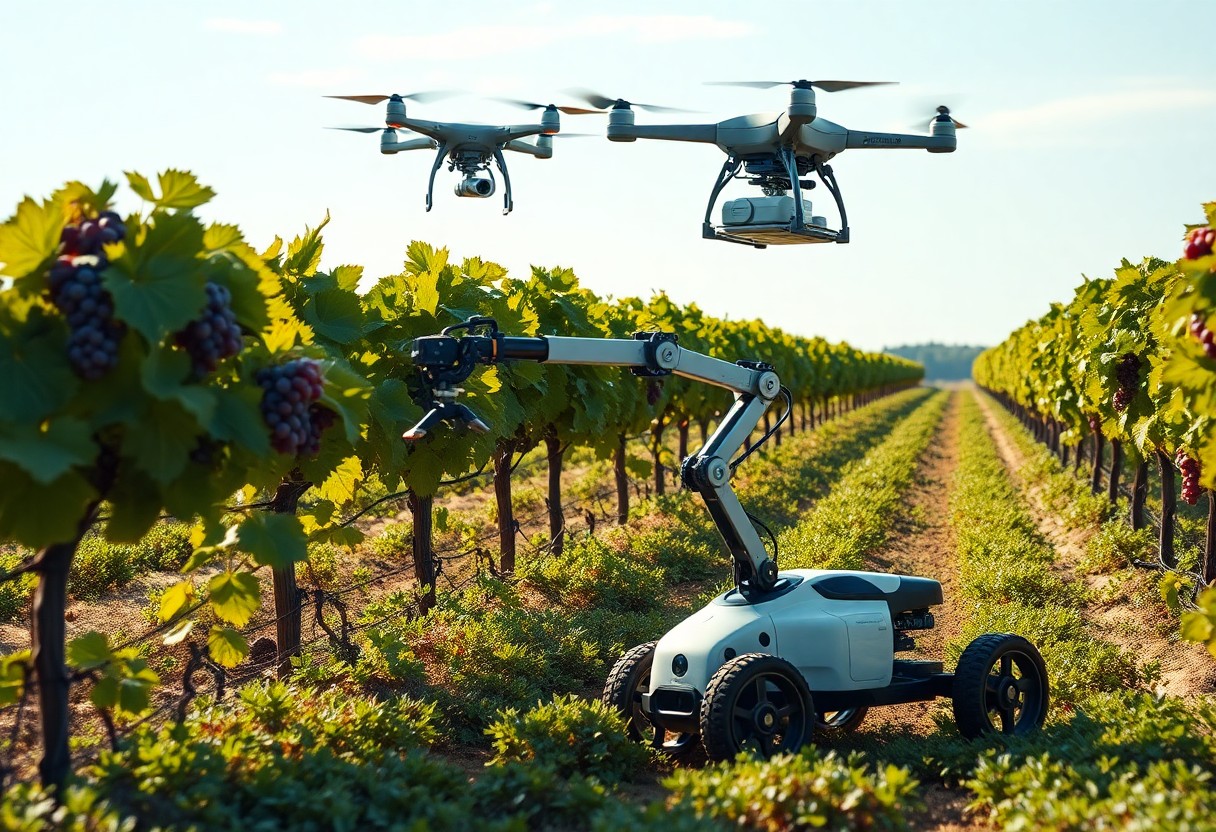Over the past decade, robotics has dramatically transformed logistics, reshaping how you manage and optimize your supply chain. By integrating automation technology, you can enhance operational efficiency, reduce costs, and improve delivery times. This blog post will explore the various applications of robotics in logistics, highlighting their impact on inventory management, order fulfillment, and transportation. With the demand for faster service on the rise, understanding these innovations can help you stay competitive in a rapidly evolving market.
Revolutionizing Warehouse Operations
Transformations in warehouse operations drastically enhance efficiency, reduce costs, and streamline processes. Automated systems not only minimize human error but also increase throughput, enabling your warehouse to handle more orders in less time. Innovators in this space implement solutions like Autonomous Mobile Robots (AMRs) and AI-driven management software, creating agile environments that adapt to fluctuating demands while improving labor productivity.
Automated Picking and Packing Systems
Automated picking and packing systems allow your warehouse to rapidly process orders with precision. Utilizing technologies such as robotic arms and conveyor belts, these systems ensure that products are efficiently picked, sorted, and packaged. Implementing these solutions can significantly reduce lead times and labor costs, empowering your team to focus on more strategic tasks rather than repetitive manual work.
Robotics in Inventory Management
Robotics in inventory management transforms how you track and handle stock levels. Automated systems leverage RFID technology and machine learning algorithms to provide real-time visibility into inventory, improving accuracy and reducing discrepancies. Your operations benefit from not only faster stocktaking but also predictive analytics that help in replenishing stock before it runs out.
Integrating robotics into your inventory management can lead to an impressive reduction in labor hours. For instance, companies like Walmart have reported substantial gains in efficiency and accuracy through the deployment of mobile robots for inventory checks. These robots navigate aisles autonomously, scan shelf items, and communicate with central systems to update inventory counts. Enhanced capabilities, such as machine learning, allow these systems to learn optimal routes and anticipate stock levels, minimizing time spent on manual counts and ensuring your warehouse operates at peak efficiency. This shift not only accelerates restocking processes but also empowers your workforce to concentrate on higher-value activities, driving productivity across the board.
Enhancing Last-Mile Delivery
Last-mile delivery represents a significant challenge in logistics, often accounting for over 28% of total transportation costs. Robotics plays a vital role in addressing these challenges by improving speed, reducing costs, and enhancing customer satisfaction. By integrating automated systems, companies can streamline their delivery processes, ensuring that packages reach customers quickly and efficiently.
Autonomous Delivery Vehicles
Autonomous delivery vehicles (ADVs) are revolutionizing the last-mile delivery landscape. These self-driving units can navigate urban environments, avoiding traffic and obstacles while ensuring timely deliveries. With advancements in AI and sensor technology, you can expect ADVs to cover more ground and operate efficiently, significantly lowering delivery costs and improving service reliability.
Drones in Supply Chain Logistics
Drones are emerging as a powerful tool in supply chain logistics, enabling rapid delivery in hard-to-reach areas. You can utilize drones to reduce delivery times drastically, especially in rural or congested urban environments. Their ability to bypass traditional transport routes makes them ideal for last-mile logistics, offering efficiency and cost savings.
Drones, equipped with advanced navigation systems and payload capacities, can deliver packages within minutes of dispatch. Companies like Amazon Prime Air aim to deliver small packages within a 10-mile radius using drones, significantly reducing traditional delivery times. With ongoing regulatory changes and improvements in drone technology, adoption rates are expected to rise steadily, reshaping the logistics landscape. This innovation not only enhances customer experience but also contributes to reduced carbon footprints through minimized vehicle use on roads.

Integrating Robotics and IoT for Smart Logistics
Integrating robotics with IoT technology creates a robust framework for smart logistics, enabling real-time monitoring, asset tracking, and optimized operations. By leveraging connected devices, you can gather extensive data insights to streamline processes and enhance decision-making. Robotics equipped with sensors not only automate repetitive tasks but also communicate vital information regarding inventory levels, equipment status, and shipment locations. This seamless integration fosters greater agility, allowing your logistics operations to respond quickly to market fluctuations and customer demands.
Real-Time Data and Predictive Analytics
Utilizing real-time data and predictive analytics empowers you to make informed operational decisions. By continuously analyzing data from your robotics and IoT systems, you can identify trends, foresee potential disruptions, and optimize resource allocation. This proactive approach minimizes downtime and maximizes efficiency, enabling you to better manage your supply chain and enhance overall performance.
Collaborative Robots in Dynamic Environments
Collaborative robots, or cobots, adapt to varying surroundings, enhancing efficiency in dynamic logistics environments. These robots work alongside human employees, adjusting their tasks based on real-time conditions and interactions. Their ability to operate in close proximity to workers without safety barriers streamlines workflows, significantly increasing productivity and reducing operational errors.
In dynamic logistics environments, cobots bring versatility and adaptability. For example, in a warehouse where product types and layouts frequently change, these robots can quickly learn new pick paths and adjust to fluctuating demands. Implementing cobots can lead to a reported 20-30% increase in operational efficiency. Furthermore, as your workforce engages with these robots, collaboration improves, translating into better task completion times and a safer working atmosphere. By continuously learning from their environment and interactions, cobots truly revolutionize how you approach logistics operations.
The Workforce of the Future: Human-Robot Partnership
Your organization can significantly benefit from embracing a human-robot partnership, blending the strengths of human intuition and creativity with the precision and efficiency of robots. This collaboration allows for enhanced productivity, where robots handle repetitive and labor-intensive tasks, freeing you to focus on more strategic roles. As technology evolves, the synergy between humans and robots will redefine operational landscapes, fostering innovation and driving logistics towards a more efficient future.
Reskilling Opportunities for Employees
Ethical Considerations in Automation
Tackling Challenges and Risks in Robotic Logistics
Effective logistics automation comes with its set of challenges that necessitate strategic solutions. Navigating issues like reliability, cybersecurity, and workforce integration will determine the long-term success of robotic systems in the supply chain. You must proactively address these challenges to fully leverage the benefits of automation while safeguarding your operations against potential risks.
Supply Chain Disruptions and Reliability
Supply chain disruptions can severely affect your operational efficiency, particularly when relying on robotics. You face potential setbacks due to equipment failures or unforeseen incidents. Implementing robust maintenance schedules and real-time monitoring systems is crucial for minimizing downtime and ensuring consistent productivity.
Cybersecurity Threats in Automated Systems
With increasing automation, your systems become prime targets for cyberattacks. Ensuring strong cybersecurity protocols is vital for protecting sensitive data and maintaining operational integrity. A breach can lead to significant financial and reputational damage, underscoring the need for stringent security measures.
Cybersecurity threats pose severe risks in automated logistics, where interconnected systems can create vulnerabilities. You should consider conducting regular security audits, investing in advanced encryption practices, and implementing multi-layered access controls to fortify your defenses. According to a recent study, 60% of small to medium-sized businesses close within six months of a cyber-attack. This statistic highlights the urgency of prioritizing cybersecurity strategies to safeguard not just your technological investments but also your overall business health. Engaging with cybersecurity experts to design a tailored security framework can further mitigate risks associated with robotic logistics systems.
To wrap up
Now that you understand the significance of robotics in logistics, it’s clear that automating the supply chain can substantially enhance your operational efficiency, reduce costs, and improve accuracy. By integrating robotics into your logistics processes, you position your business to adapt to market demands and optimize resource use. Embracing this technology not only streamlines your operations but also creates opportunities for innovation and growth in a competitive landscape.







